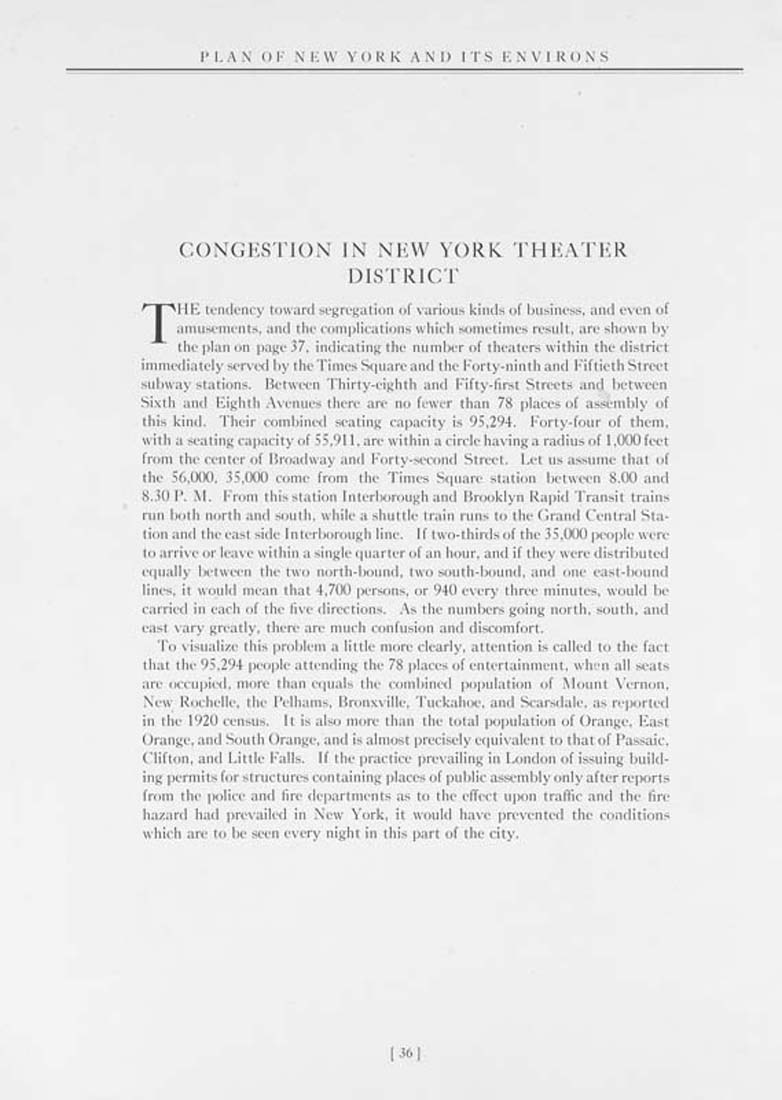PLAN OF NEW YORK AND ITS ENVIRONS
CONGESTION IN NEW YORK THEATER
DISTRICT
THE tendency toward segregation of various kinds of business, and even of
amusements, and the complications which sometimes result, are shown by
the plan on page 37, indicating the number of theaters within the district
immediately served by the Times Square and the Forty-ninth and Fiftieth Street
subway stations. Between Thirty-eighth and Fifty-first Streets and between
Sixth and Eighth Avenues there are no fewer than 78 places of assembly of
this kind. Their combined seating capacity is 95,294. Forty-four of them,
with a seating capacity of 5 5,911, are within a circle having a radius of 1,000 feet
from the center of Broadway and Forty-second Street. Let us assume that of
the 56,000, 35,000 come from the Times Square station between 8.00 and
8.30 P. M. From this station Interborough and Brooklyn Rapid Transit trains
run both north and south, while a shuttle train runs to the Grand Central Sta¬
tion and the east side Interborough line. If two-thirds of the 35,000 people were
to arrive or leave within a single quarter of an hour, and if they were distributed
equally between the two north-bound, two south-bound, and one east-bound
lines, it would mean that 4,700 persons, or 940 every three minutes, would be
carried in each of the five directions. As the numbers going north, south, and
east vary greatly, there are much confusion and discomfort.
To visualize this problem a little more clearly, attention is called to the fact
that the 95,294 people attending the 78 places of entertainment, when all seats
are occupied, more than equals the combined population of Mount Vernon,
New Rochelle, the Pelhams, Bronxville, Tuckahoe, and Scarsdale, as reported
in the 1920 census. It is also more than the total population of Orange, East
Orange, and South Orange, and is almost precisely equivalent to that of Passaic,
Clifton, and Little Falls. If the practice prevailing in London of issuing build¬
ing permits for structures containing places of public assembly only after reports
from the police and fire departments as to the effect upon trafhc and the fire
hazard had prevailed in New York, it would have prevented the conditions
which are to be seen every night in this part of the city.
36
|








